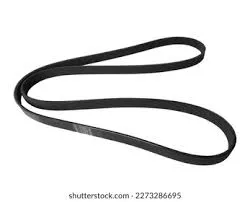- Arabic
- French
- Russian
- Spanish
- Portuguese
- Turkish
- Armenian
- English
- Albanian
- Amharic
- Azerbaijani
- Basque
- Belarusian
- Bengali
- Bosnian
- Bulgarian
- Catalan
- Cebuano
- Corsican
- Croatian
- Czech
- Danish
- Dutch
- Afrikaans
- Esperanto
- Estonian
- Finnish
- Frisian
- Galician
- Georgian
- German
- Greek
- Gujarati
- Haitian Creole
- hausa
- hawaiian
- Hebrew
- Hindi
- Miao
- Hungarian
- Icelandic
- igbo
- Indonesian
- irish
- Italian
- Japanese
- Javanese
- Kannada
- kazakh
- Khmer
- Rwandese
- Korean
- Kurdish
- Kyrgyz
- Lao
- Latin
- Latvian
- Lithuanian
- Luxembourgish
- Macedonian
- Malgashi
- Malay
- Malayalam
- Maltese
- Maori
- Marathi
- Mongolian
- Myanmar
- Nepali
- Norwegian
- Norwegian
- Occitan
- Pashto
- Persian
- Polish
- Punjabi
- Romanian
- Samoan
- Scottish Gaelic
- Serbian
- Sesotho
- Shona
- Sindhi
- Sinhala
- Slovak
- Slovenian
- Somali
- Sundanese
- Swahili
- Swedish
- Tagalog
- Tajik
- Tamil
- Tatar
- Telugu
- Thai
- Turkmen
- Ukrainian
- Urdu
- Uighur
- Uzbek
- Vietnamese
- Welsh
- Bantu
- Yiddish
- Yoruba
- Zulu
Nov . 27, 2024 01:06 Back to list
Exploring the Importance of Timing Belts in Automotive Performance and Maintenance
Understanding Car Toothed Belts Importance, Function, and Maintenance
When it comes to car maintenance, many vehicle owners often overlook specific components that play a crucial role in their vehicle's performance. One such element is the toothed belt, also commonly known as the timing belt. This essential part is responsible for synchronizing the rotation of the crankshaft and camshaft, ensuring that the engine's valves open and close at the appropriate times during each cylinder's intake and exhaust strokes. Understanding the importance and function of car toothed belts, as well as how to maintain them, is key to prolonging the life of your vehicle and avoiding costly repairs.
The Function of the Toothed Belt
The toothed belt is typically made from a durable rubber material with teeth that grip the gears of the engine’s components. As the crankshaft spins, the toothed belt translates that motion to the camshaft, allowing for a precise timing sequence necessary for the engine's operation. In many modern engines, a failure of the toothed belt can lead to disastrous consequences, often resulting in severe engine damage. This is especially true for interference engines, where the components of the engine may collide if the timing belt fails.
In addition to ensuring correct synchronization within the engine, the toothed belt may also drive other essential components, such as the water pump and oil pump. Thus, a well-functioning toothed belt is vital for the overall health of the engine and its ancillary systems.
Signs of Wear and Tear
Like any mechanical component, a toothed belt can wear out over time. Regular inspection and maintenance are essential to identify signs of deterioration. Common indicators that your toothed belt may need replacement include
1. Cracks and Fraying Visible wear, including cracks or frayed edges, is a clear sign that the belt should be replaced. Check for these signs during routine maintenance checks.
2. Engine Noise If you hear unusual noises coming from the engine, such as a ticking sound, it may indicate a problem with the toothed belt or its tensioner.
car toothed belt

3. Decreased Engine Performance A belt that is slipping or worn can lead to decreased engine performance, affecting acceleration and overall driving dynamics.
4. Warning Lights Many modern vehicles are equipped with sensors that can detect issues with engine timing. If a warning light appears on your dashboard, consult your vehicle’s manual and seek professional assistance.
Maintenance and Replacement
The lifespan of a toothed belt varies depending on the make and model of the car as well as driving conditions. Generally, it is advisable to replace the toothed belt every 60,000 to 100,000 miles, but you should always refer to your owner’s manual for the manufacturer’s recommendations.
Maintenance involves regular inspections and, when necessary, replacing the belt along with other components such as the tensioner and idler pulleys, which help keep the belt tight and functioning correctly. It is often beneficial to have these components replaced simultaneously to ensure optimal performance.
Professional Assistance
While some vehicle owners may be tempted to handle toothed belt checks and replacements themselves, it is often best to seek professional assistance. Engine timing is a precise function, and improper installation can lead to significant issues. A qualified mechanic will have the tools and expertise needed to perform the job correctly, ensuring the longevity of your engine.
Conclusion
In conclusion, the toothed belt, or timing belt, is a vital component of your vehicle’s engine. Understanding its function, recognizing the signs of wear and tear, and following a maintenance schedule are crucial in preventing engine damage and ensuring your car operates smoothly. Always refer to your vehicle’s manufacturer guidelines for best practices, and don’t hesitate to consult professionals for inspections and replacements. By taking care of your toothed belt, you safeguard not only your engine’s performance but also your investment in your vehicle. Remember, regular maintenance is the key to a reliable and durable car.
-
Korean Auto Parts Timing Belt 24312-37500 For Hyundai/Kia
NewsMar.07,2025
-
7PK2300 90916-T2024 RIBBED BELT POLY V BELT PK BELT
NewsMar.07,2025
-
Chinese Auto Belt Factory 310-2M-22 For BMW/Mercedes-Benz
NewsMar.07,2025
-
Chinese Auto Belt Factory 310-2M-22 For BMW/Mercedes-Benz
NewsMar.07,2025
-
90916-02660 PK Belt 6PK1680 For Toyota
NewsMar.07,2025
-
drive belt serpentine belt
NewsMar.07,2025

